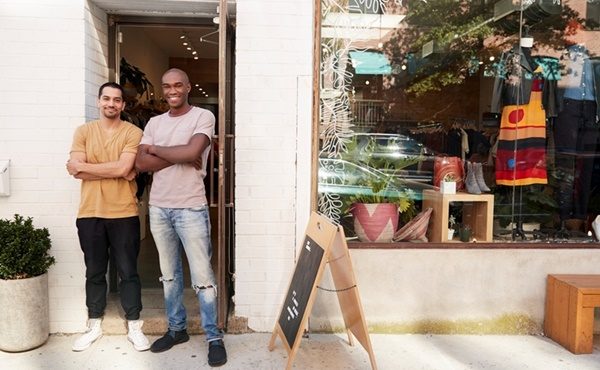Bricks-and-mortar retailers might have an upper hand when it comes to personalised customer experiences and seamless checkouts if they get their in-store strategy right.
Online shopping remains an attractive channel for many, but initial fears that online retailers would edge out bricks-and-mortar stores are proving unfounded.
Data from Salesforce suggests that people of all ages still enjoy buying in-store, regardless of how convenient online shopping can be. Now, retailers are competing more effectively by revolutionising their in-store experience, giving shoppers increased personalisation, providing sensory experiences that aren’t available online, and optimising the experience so it feels just as seamless as online shopping.
For example, sports footwear brand ASICS offers a Pronation Test for customers to help them choose the right shoe to improve their running technique and reduce injury. This combines human in-store experience with customer service, innovation, product recommendations, and a personalised experience that simply can’t be replicated online.
Sometimes, the high level of personalisation that’s possible for online retailers can also be extended to physical stores, potentially giving bricks-and-mortar retailers a slight competitive edge. For example, Amazon uses reviews, rankings and ratings to bring web-like visibility into customer journeys and paths in store. Visitors to the physical store in New York also receive the same discounts and offers as they would online if they currently have a Prime membership.
Seamless payment
When it comes to offering the same seamless check-out experience as online stores, physical retailers can also compete. For example, stores can require visitors to login with their membership details when they arrive, then automatically scan items as shoppers walk around the store or place them in a trolley. When it’s time to leave, the retailer can simply charge the shopper’s payment method according to their membership details, and the shopper can walk out of the store without physically going through a traditional check-out experience.
A great example is WeChat Pay. It has taken the Chinese market by storm, unlocking seamless retail experiences for users. This digital wallet can be used by consumers to gain entry to un-staffed stores called EasyGo, automatically add the products they choose to their digital bills, then instantly pay the total sum as they leave the store.
This means customers can pay for their groceries, fashion, resources, and more, without needing to interact with staff or reach for their physical wallets. Consumers benefit from these seamless, quick, and convenient experiences, while retailers and brands can engage their customers in more personalised, data-driven, and profitable ways.
If this is too costly or seems too advanced for smaller retailers who are still in the early stages of their digital payments journey, there are other options that can offer a similar level of convenience. For example, sales staff can use tablets or smartphones as point of sale devices, completing transactions from anywhere in the store, providing the shopper with a quick alternative to check-out queues.
Leveraging data
There are myriad ways retailers can give shoppers an exceptional in-store experience and the key to choosing the right approach is data. Retailers must collect relevant data to understand what drives their shoppers’ behaviours, which in turn can help the retailer decide exactly what experiences and options will be most compelling for its target audience.
Online stores have access to real-time data; everything their shoppers do online is captured and can be analysed. Bricks-and-mortar stores need to catch up and choose key data sources to collect and analyse. This can include point of sale data, competitor pricing and promotional data, and customer data through tactics like loyalty schemes.
Based on this knowledge, retailers can understand who their customers are, what their purchase behaviours are, and what will drive them to purchase. This means identifying customer personas, for instance, and then devising personalised experiences that will engage them more effectively, encouraging them buy in-store. This will directly impact profitability, delivering a solid return on investment as long as the right data is used to guide this strategy.
Retailers can leverage data to segment their audience and provide personalised content, product recommendations, promotions and offers that customers are more likely to respond to based on their behaviour, preferences and purchase history. This is an area with lots of opportunity to improve for most retailers. By using data insights to identify customer personas and loyalty segments, retailers will be able to deliver compelling content that’s relevant to the shopper at the right time, increasing the likelihood of conversions.
To revolutionise the in-store experience and loyalise customers, retailers should harness the power of data. This will let them drive strategic decision-making in terms of marketing, store merchandising, promotional initiatives and customer strategy to maximise profitability while providing shoppers with a truly unique, seamless and personalised shopping experience.
This can open up opportunities for retailers to innovate in ways that help grow and improve their business and create a strong pathway to future success.
By Claire Mula, COO of Invigor Group







